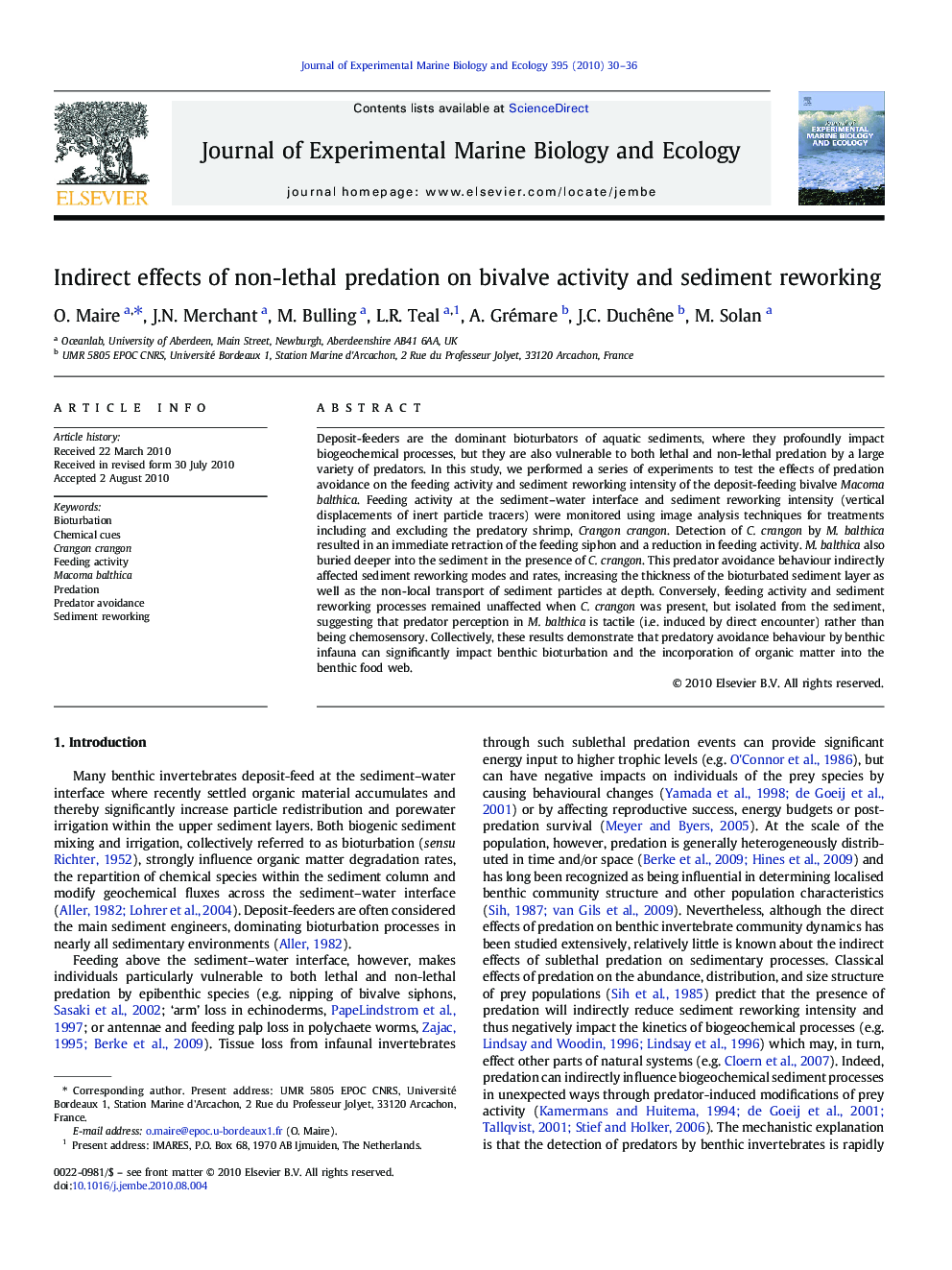| Article ID | Journal | Published Year | Pages | File Type |
|---|---|---|---|---|
| 4396497 | Journal of Experimental Marine Biology and Ecology | 2010 | 7 Pages |
Abstract
Deposit-feeders are the dominant bioturbators of aquatic sediments, where they profoundly impact biogeochemical processes, but they are also vulnerable to both lethal and non-lethal predation by a large variety of predators. In this study, we performed a series of experiments to test the effects of predation avoidance on the feeding activity and sediment reworking intensity of the deposit-feeding bivalve Macoma balthica. Feeding activity at the sediment-water interface and sediment reworking intensity (vertical displacements of inert particle tracers) were monitored using image analysis techniques for treatments including and excluding the predatory shrimp, Crangon crangon. Detection of C. crangon by M. balthica resulted in an immediate retraction of the feeding siphon and a reduction in feeding activity. M. balthica also buried deeper into the sediment in the presence of C. crangon. This predator avoidance behaviour indirectly affected sediment reworking modes and rates, increasing the thickness of the bioturbated sediment layer as well as the non-local transport of sediment particles at depth. Conversely, feeding activity and sediment reworking processes remained unaffected when C. crangon was present, but isolated from the sediment, suggesting that predator perception in M. balthica is tactile (i.e. induced by direct encounter) rather than being chemosensory. Collectively, these results demonstrate that predatory avoidance behaviour by benthic infauna can significantly impact benthic bioturbation and the incorporation of organic matter into the benthic food web.
Keywords
Related Topics
Life Sciences
Agricultural and Biological Sciences
Aquatic Science
Authors
O. Maire, J.N. Merchant, M. Bulling, L.R. Teal, A. Grémare, J.C. Duchêne, M. Solan,
